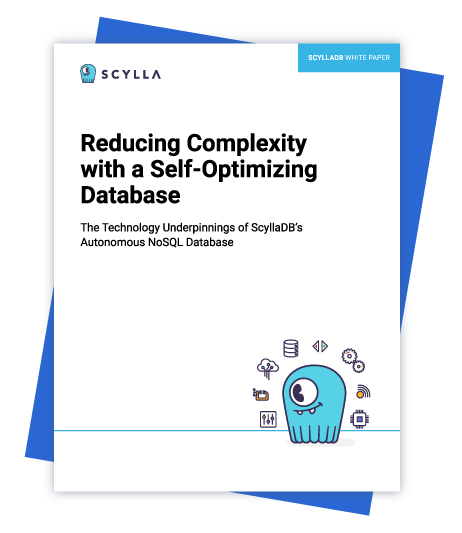The Technology Underpinnings of ScyllaDB’s Autonomous NoSQL Database
To be effective, a self-optimizing database must navigate between allowing too much and too little control. Too much control requires endless configuration and byzantine tuning parameters that place the burden of performance and stability on the operator. Too little control puts operators at the mercy of external forces and vendor support teams. The trick is to strike the appropriate balance to reduce complexity.
This whitepaper explains the path from automation to self-optimization, the difference between automated and autonomous database systems, and how control theory reduces complexity by automating key aspects of runtime database administration.
Read to learn how:
- Scylla’s algorithms let the system self-correct to find the best rate of operations (such as compactions) under varying loads, lower the risk of catastrophic failures and improve the interplay between maintenance and customer-facing latency.
- A self-optimizing database enables you to run operational and analytics workloads against unified infrastructure, achieving higher levels of utilization, eliminating wasteful over provisioning, and significantly lowering administrative overhead.


